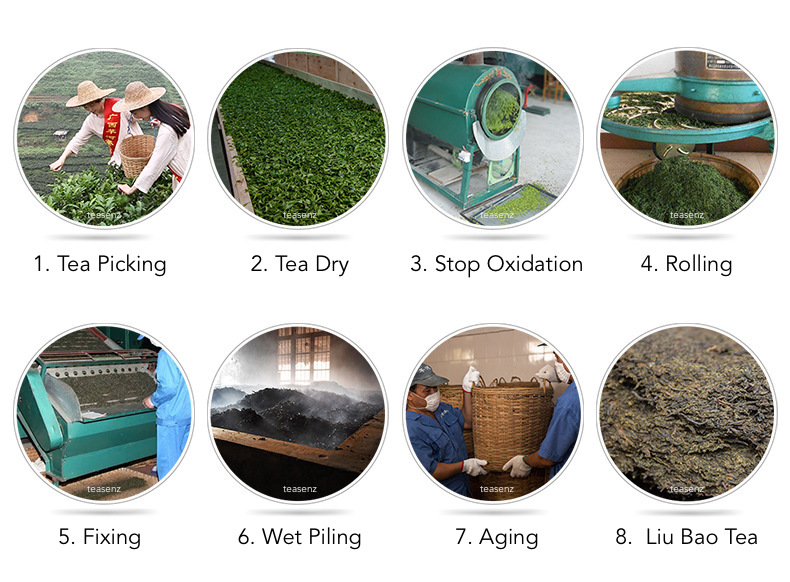May 24, 2022
4073 view(s)
Liu Bao tea is a post-fermented tea from Guangxi with an unique processing method invented in the 18th century. See below the steps of processing Liu Bao tea from a freshly picked leaf until it's aged for consumption.
- Processing Liu Bao tea starts with carefully picking the leaves.
- These leaves are then uniformly spread on a flat surface allowing them to dry and wither.
- After a certain withering level is achieved, the oxidation of the leaves is stopped. This is also known as 'sha qing' (or 'kill green'). This happens in rotating machines in which the leaves are heated. The temperature is set in a certain level that the oxidation can be effectively stopped without burning the leaves. The rotation makes sure shaqing process happens uniformly, making sure there are no leaves that are still oxidating.
- After stopping oxidation, the leaves are rolled into their desired shape. This may happen by hand or machine.
- This is followed by further machine drying to 'fix' their rolled shape.
- The leaves are then piled together in in a humid, but controlled environment allowing the post-fermentation process to start. This takes about 20 days but varies from farm to farm. The goal of this step is to speed up the fermentation that would otherwise take several years to complete.
- Once the required fermentation level has been achieved, the leaves are steamed and compressed, and then loosened up again into loose tea. This may be followed by a second round of steaming and compression, known as the 'double steam, double compression' technique. The tea is then loosened up again and stored in bamboo baskets, or they are stored in compressed form. Storage in loose leaves inside bamboo baskets is more common for Liu Bao tea, as it allows for better air circulation. This is beneficial for further aging of the leaves.
Liu Bao tea is generally at least stored for 1 year before they're sold, but reach their best flavour after at least 3 years of storage. After longer periods, Liu Bao tea sometimes developed yellow dots/molds which are known as 'golden flowers' (jin hua). This is a sign of excellent fermentation and is considered very healthy to drink.
Have you purchased a Liu Bao Tea recently? And do you want to know how to brew it yourself? Then read: How to make Liu Bao Tea